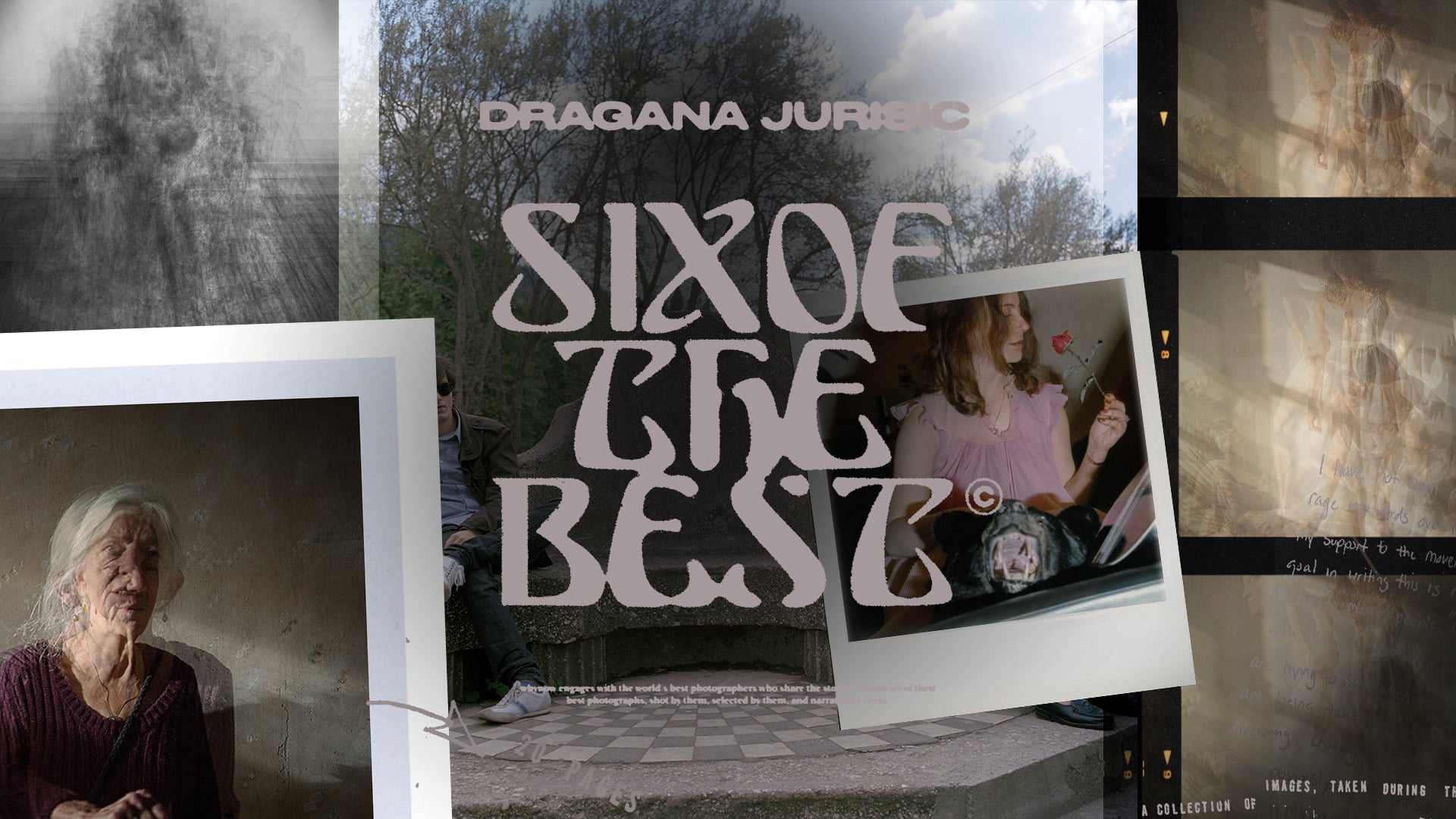
Dragana Jurisic gives us Six of the Best
When Dragana Jurisic was 16, her house in ex-Yugoslavia burned down during the ethnic conflict that raged for the final decade of the last century. After her father took one last photograph of their home to produce as evidence to an insurance company, he gave his daughter his camera.
Dragana says that having a camera gave her a feeling of being able to order chaos in the world, and helped her cope with the madness that was rolling over her nation.

“This image is from YU: The Lost Country. In 2011 – 2013 I followed a British writer Rebecca West’s footsteps from her book Black Lamb and Grey Falcon that was published in 1941. It’s a masterpiece of the 20th century and probably the most important book ever written about ex-Yugoslavia. I ritualistically retraced her steps, starting on the same day as her but 75 years later on Easter in Zagreb, Croatia. I tried to retrace the steps to the hour. The book is half-a-million words long and so she goes into enough detail and tells you what she does from the moment she wakes up. In her book, someone gets killed on the road and they have to wait hours for the body to be taken away so that they can carry on with the journey.
I think it was an attempt to soothe himself…
The exact same thing happened to me when I was retracing her footsteps. The body in this photograph in the road with the old man holding a dandelion in the foreground is of a young child who got hit by a car. The man is a truck driver who was in front of us on the road. This reaction of him to pick up and study this flower when there was so much screaming going on…I think it was an attempt to soothe himself.”

“This bench in Bosnia commemorates the place where Franz Ferdinand got assassinated. This photograph is also from Yu: The Lost Country. I came to this bench and found these two people sitting there. Rebecca West talks about Sarajevo having such a rich tapestry of people and architecture. Bosnians consider Gavrilo Princip, the man who shot Franz Ferdinand, a hero rather than a terrorist.”

“This isn’t an image of mine but it’s one I’m working with for my new book. I believe it’s a self-portrait of my aunt Gordana Cavic, who escaped Yugoslavia in the 1950s. She was from a tiny little village and was very poor and had no education but ended up in Paris. Because the government had imprisoned her mother, they used her as collateral to force her to spy on the people who helped her escape. There are other rumours about her life in Paris, such as sex work, but these are unsubstantiated. I’m writing a fictionalised biography about her life.”

“The National Gallery of Ireland selected three contemporary artists to respond to the Vermeer exhibition that was on at the time. There are two main aspects of Vermeer’s paintings, the first is the light and the other is women in interiors. Many people try to take him down and say he used camera obscura to paint his subjects, but to me that’s his genius. In the composition he decides how he captures the light, so I wanted to make an image that tracks that light but will respond to the lives of women indoors.
The only way for the women to be exorcised of the poison would be to perform this wild dance for days…
“At the time I was reading Ibsen’s Doll’s House. The main character, Nora, leaves her husband in order to discover herself, which is quite radical work for the 1800s, and she dances the tarantella. There’s this legend that women displayed hysterical symptoms in the province of Taranto in Southern Italy after being bitten by the enormous wolf spider. The only way for them to be exorcised of the poison would be to perform this wild dance for days.”

“That’s Paula Meehan. She’s one of Ireland’s most important poets living and working today. We worked together last year and made a book called Museum. It looks at the life and history of a building in Dublin called Number 14 Henrietta Street. It was made for an aristocratic family during Georgian times and then turned into a tenement that closed in the 1970s. Here Paula’s talking about Michael Hartnett, another Irish poet who she claims wrote spells, not poems.”

“Mnemosyne is an overlay portrait of a hundred women I shot in my studio during 2015. I tried to think of doing something different as a female photographer photographing nudes because nudes is one of the biggest cliches of Western art. I don’t like taking portraits of people, I find it challenging and confrontational, but I wanted to challenge myself and do this as an experiment. After taking one hundred pictures I sent women a list of nine muses from Greek mythology. Each woman identified with one of the nine muses and in the end I called the entire piece Mnemosyne, who is the mother of the muses and the goddess of memory.”



